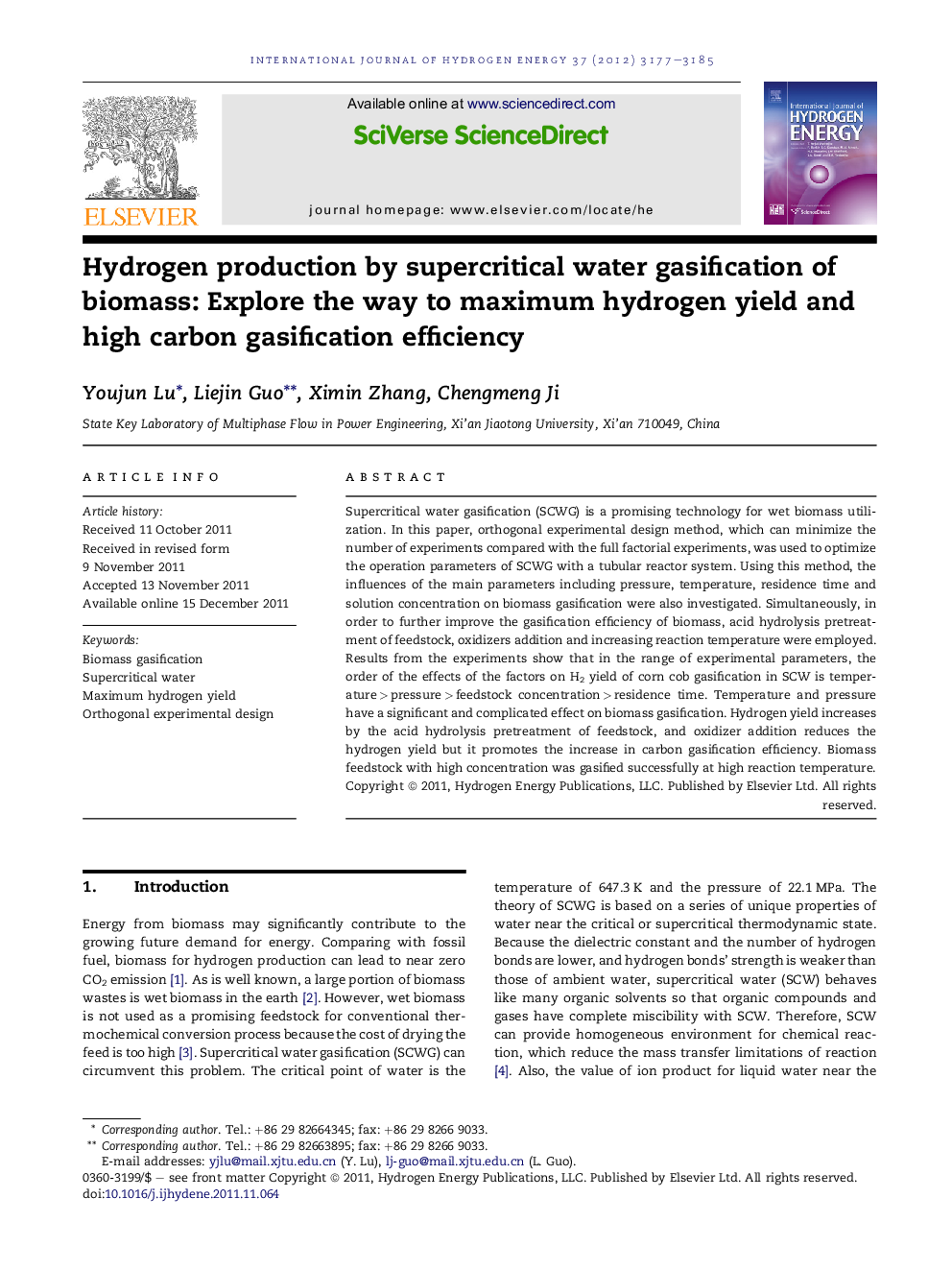| Article ID | Journal | Published Year | Pages | File Type |
|---|---|---|---|---|
| 1282322 | International Journal of Hydrogen Energy | 2012 | 9 Pages |
Supercritical water gasification (SCWG) is a promising technology for wet biomass utilization. In this paper, orthogonal experimental design method, which can minimize the number of experiments compared with the full factorial experiments, was used to optimize the operation parameters of SCWG with a tubular reactor system. Using this method, the influences of the main parameters including pressure, temperature, residence time and solution concentration on biomass gasification were also investigated. Simultaneously, in order to further improve the gasification efficiency of biomass, acid hydrolysis pretreatment of feedstock, oxidizers addition and increasing reaction temperature were employed. Results from the experiments show that in the range of experimental parameters, the order of the effects of the factors on H2 yield of corn cob gasification in SCW is temperature > pressure > feedstock concentration > residence time. Temperature and pressure have a significant and complicated effect on biomass gasification. Hydrogen yield increases by the acid hydrolysis pretreatment of feedstock, and oxidizer addition reduces the hydrogen yield but it promotes the increase in carbon gasification efficiency. Biomass feedstock with high concentration was gasified successfully at high reaction temperature.
► Orthogonal experimental method was used to optimize the operation parameters. ► The optimum operation condition for H2 production was obtained using this method. ► The influences of the main parameters on SCWG were obtained using this method. ► High concentration feedstock was gasified completely at high temperature.
